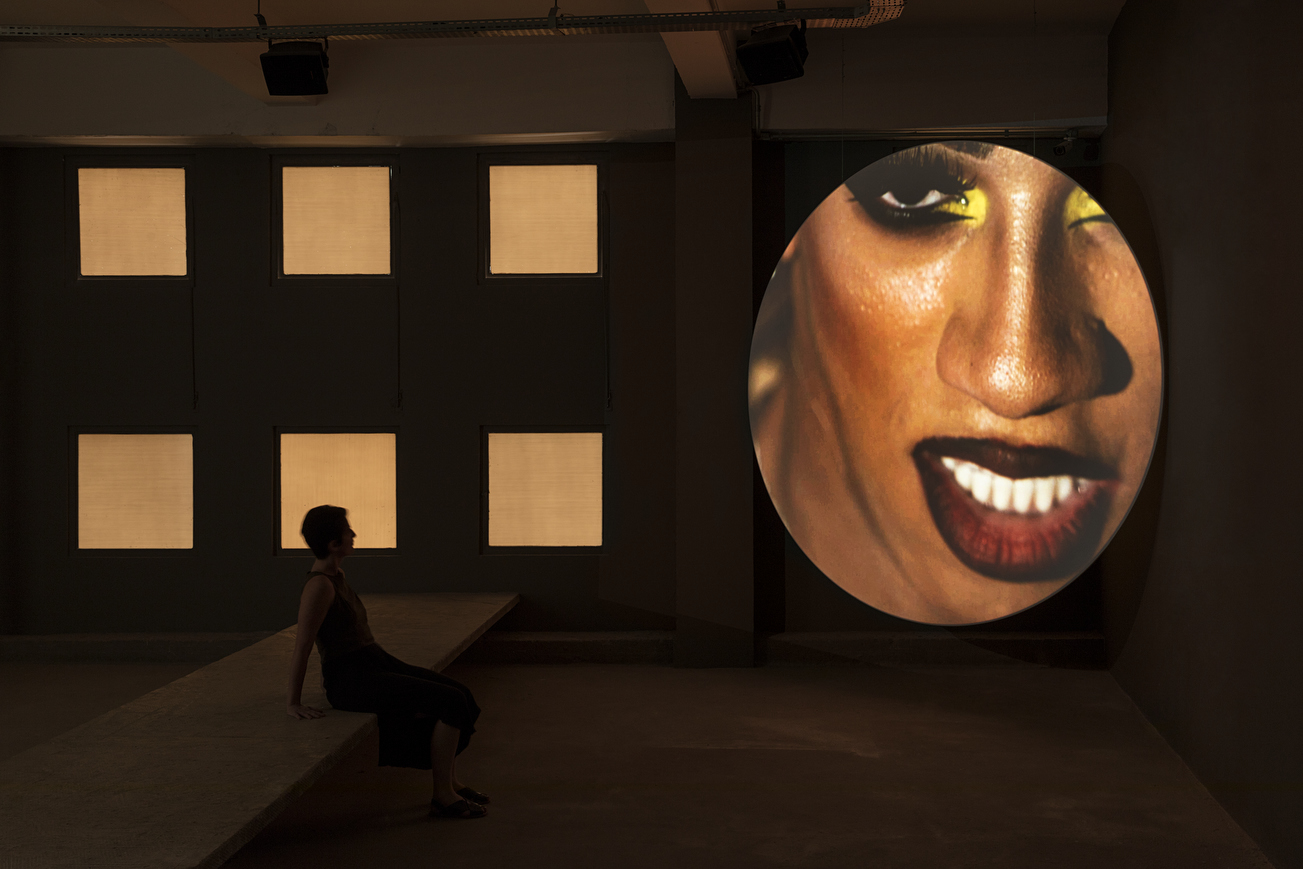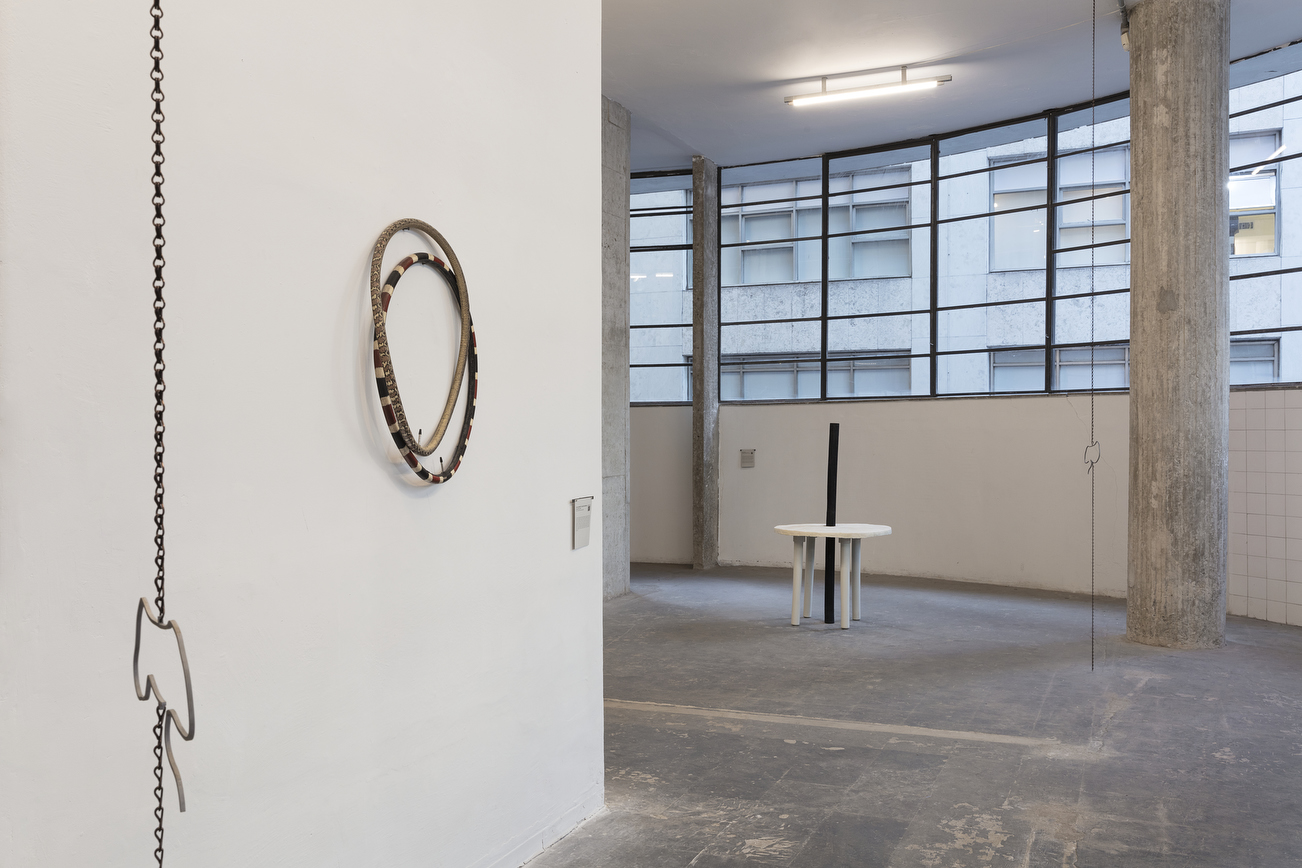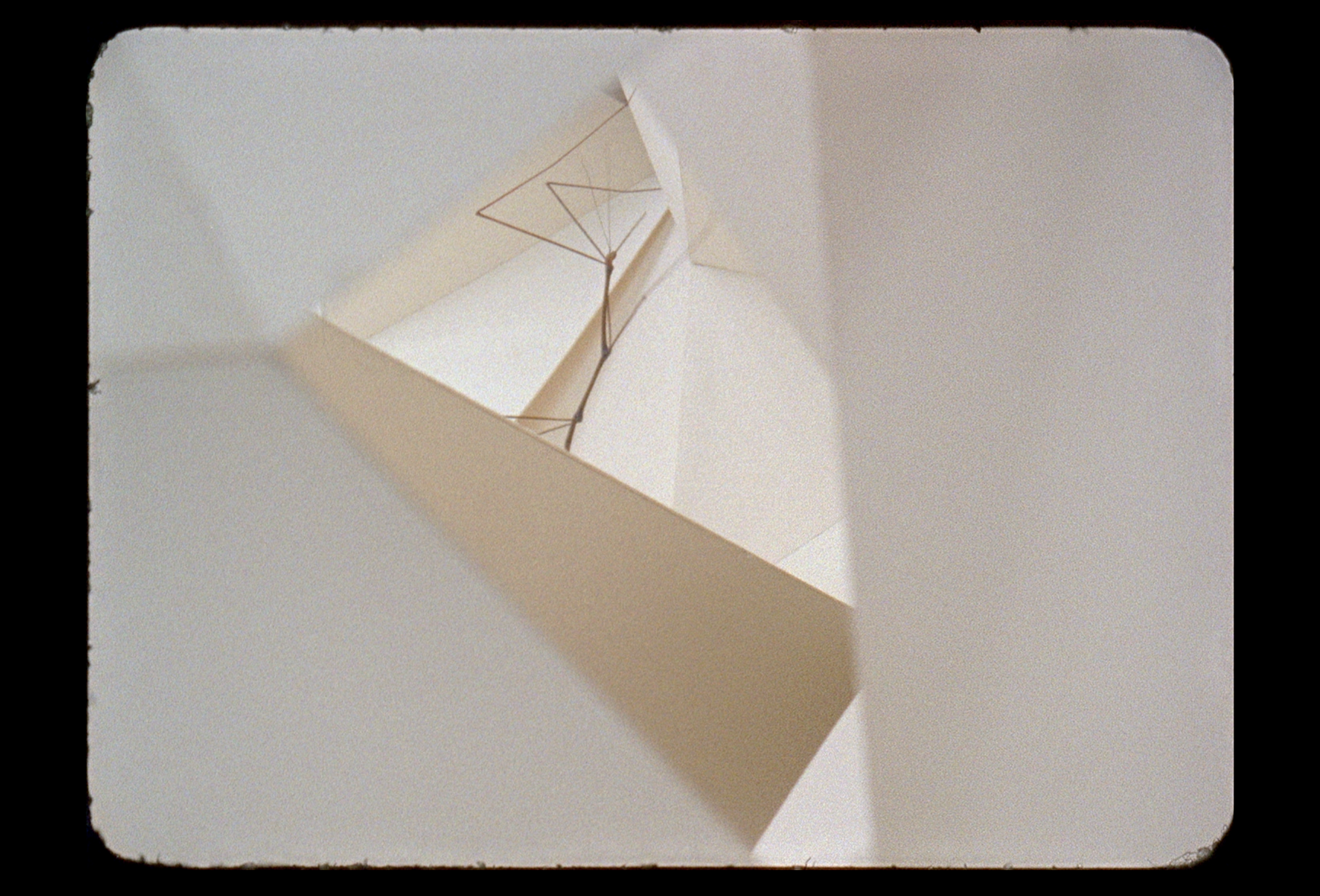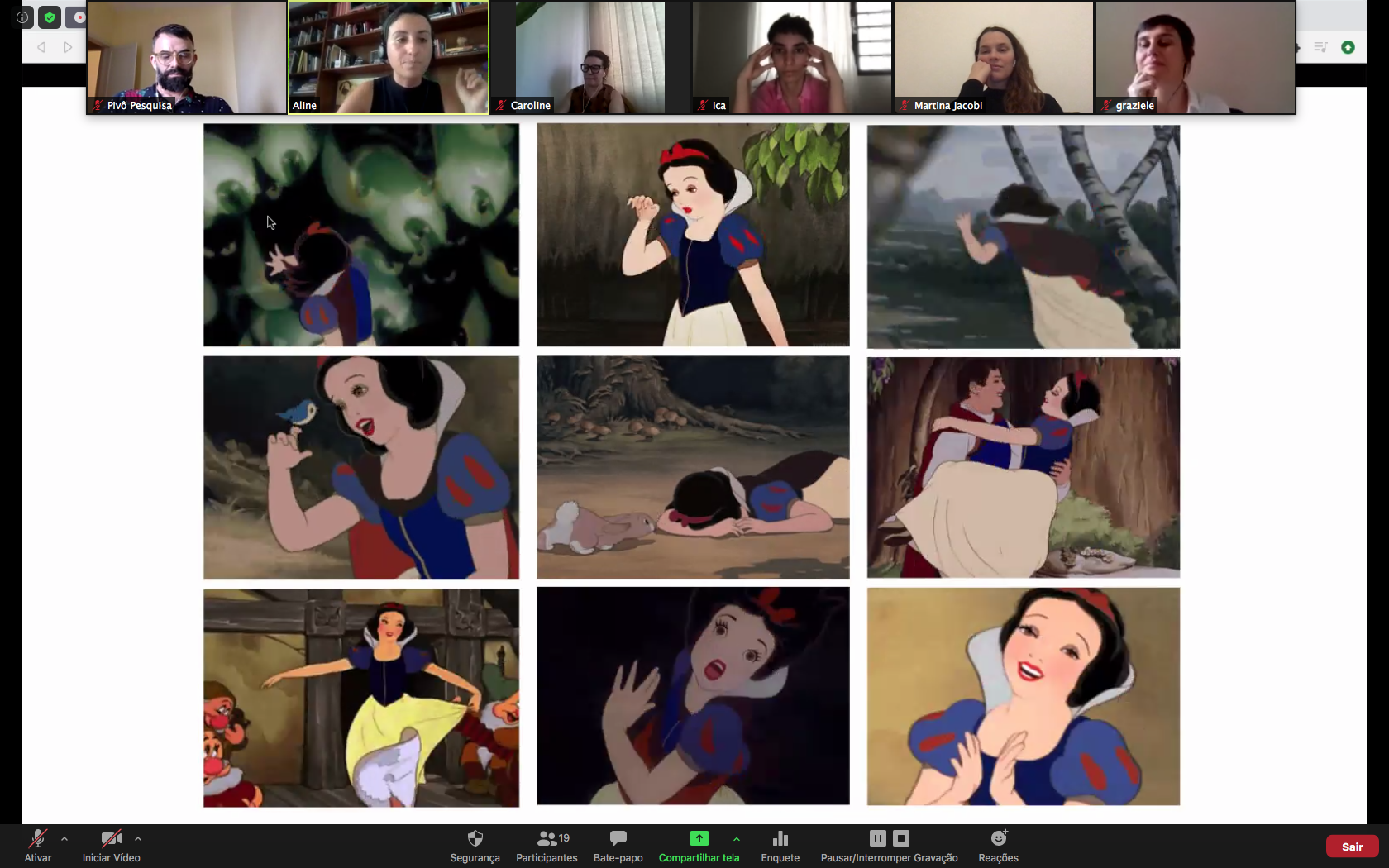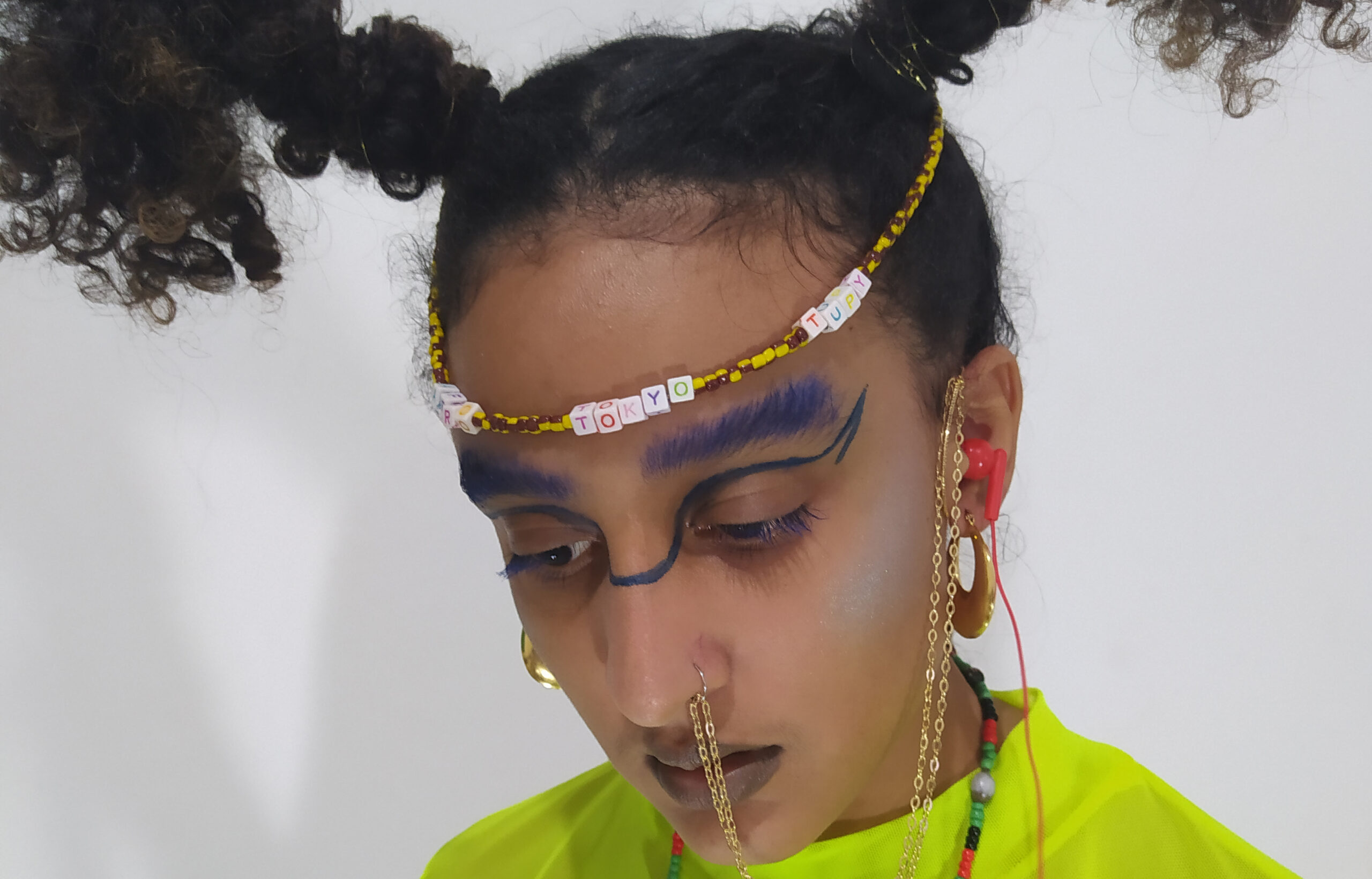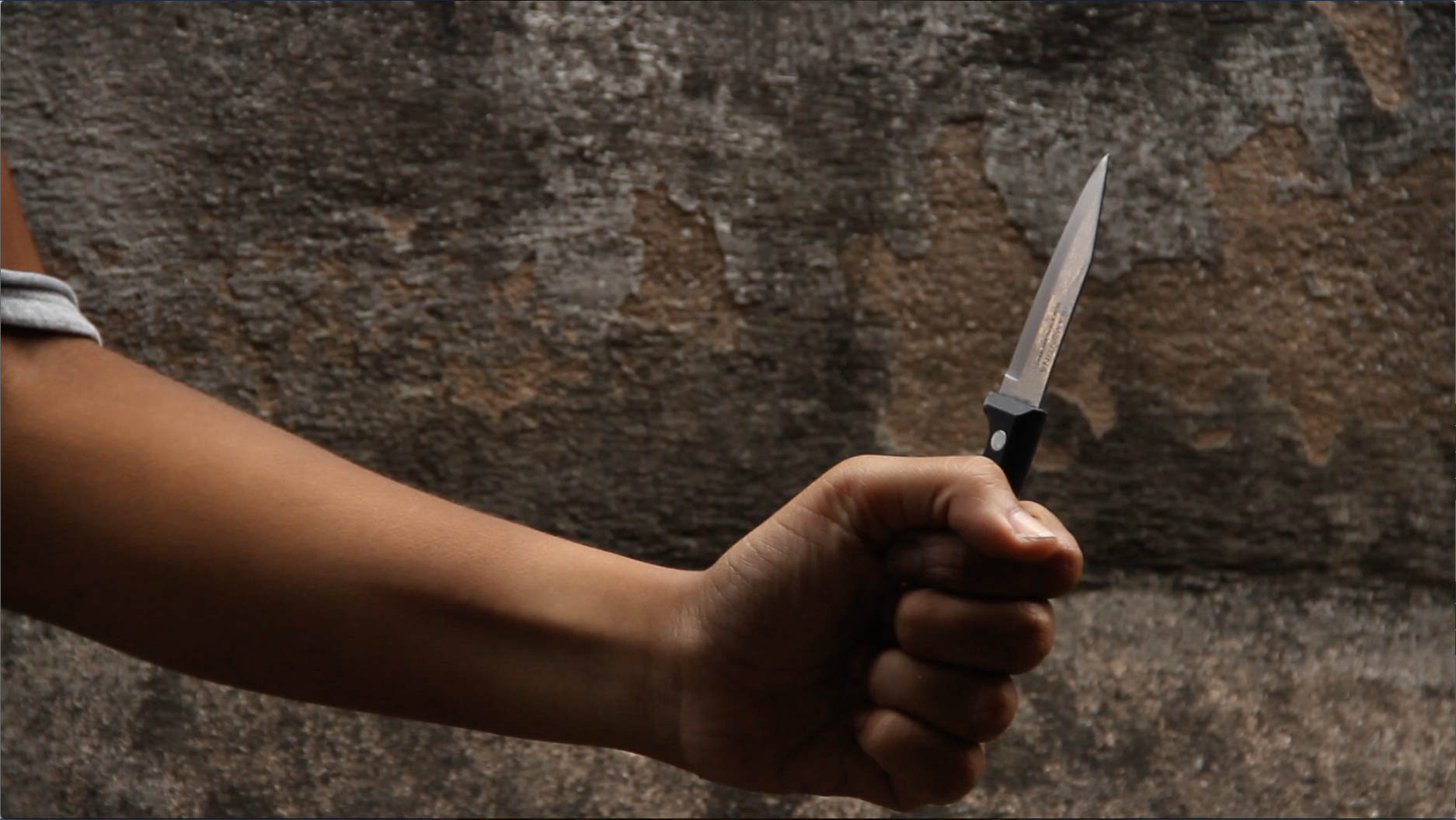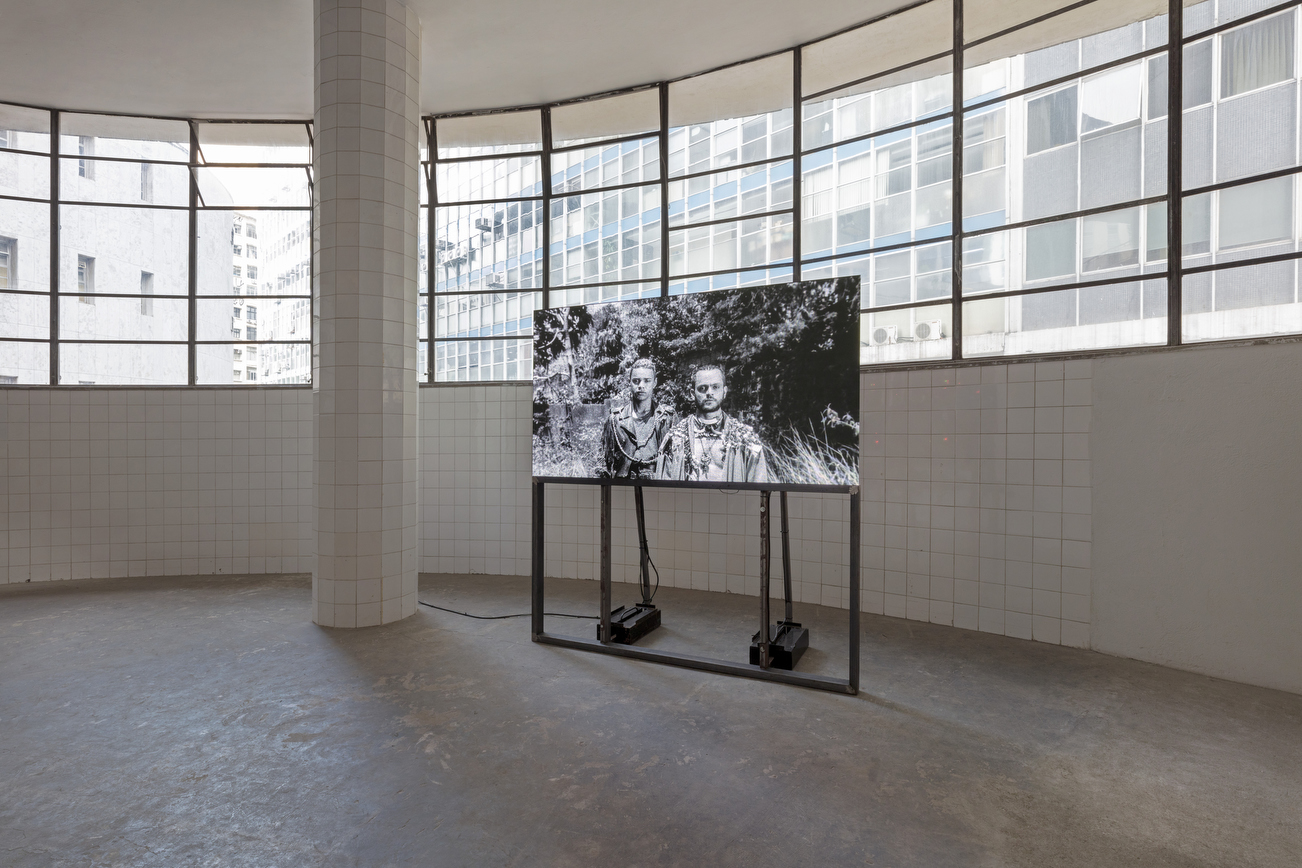

A dialogue between artists. The following interview is a transcript of a video call between Luiz Roque and Agrippina R. Manhattan. The trigger for the conversation was the individual exhibition held by Roque at Pivô, in 2020. República presented an overview of the artist’s past ten years of production, in addition to a new film, commissioned especially for the project in a partnership between Pivô and CAC Passerelle (Brest, France). In the film, which lent its title to the exhibition, the artist uses fantasy and documentary to portray the square of the same name, located in downtown São Paulo – where he lives and where Pivô is located -, and the LGBTQ+ community that has settled around it over the years.
Agrippina R. Manhattan: Luiz, I would like you to talk a little about your trajectory, especially about the pedagogical experiences that were important in your work and your understanding of your performance as an artist.
Luiz Roque: I went to university in 1999, to study Public Relations at the communications school of Universidade Federal do Rio Grande do Sul, and I was lucky to meet a group of people who were interested in film. We started making films, shooting on Super 8 – something I still do. I soon understood that communications were not my area; I started working with cinema, and later asked for a transfer to the Visual Arts course at UFRGS.
As Visual Arts was not my first course, I believe I was better able to take advantage of it. I find this question about my pedagogical experiences interesting, as I chose to specialize in Art History, Theory and Criticism. I moved through different studios, but nothing really caught my attention, so I decided to go down the theory path and thought to myself, ‘I’m going to read a few things’. I was a little more mature by then and I thought it would be interesting to study something.
And I did. My advisor, Ana Albani de Carvalho, taught the Methodology in Art Research course, which was very important, and my dissertation was titled Ficções em Videoarte [Fictions in Video Art], which, like any undergraduate dissertation, was a very ambitious work, a desire to embrace the world. My conclusion was that artists were working with fiction because there was an interesting appeal… working with fiction and creating a narrative were very powerful tools to seduce the public, especially considering the museum as a form of communication, which is something that my advisor greatly helped me to understand.
To think of exhibition space as a means of communication. Museums and galleries are spaces that are filled with things, where the viewer is not required to stay put, unlike the theater. At this point, I began to understand that I wanted to make films that were seductive in a way.
AM: I like it when you talk about the museum as a form of communication, because I wanted you to comment on your individual exhibition TELEVISÃO [Television], held at Museu de Arte Contemporânea de Niterói, in 2018-2019. That was when we met, I worked as an art educator at the institution and I had the chance to spend a lot of time with the exhibition. What seduced me the most, and I believe a large part of the audience as well, was the way in which the fiction you create and the way you build your human and non-human characters carries a film dimension but is edited to an idea of time that characterizes video art. Talk a little about it.
LR: Yes, time in video art is not the same as in film. Specifically, in the MAC-Niterói space, the exhibition took place in a circular area, in which people could enter from both the left and the right and walk down in a circle. I remember talking to the curators, Pablo León de La Barra and Raphael Fonseca, about the films also showing this looping characteristic. The films are short. They are circular. The space becomes circular.
All of my work is built around short narratives. I like to think that anyone, coming in at any point of the work, will immediately feel a connection, or at least that is my intention; that I will somehow be able to invite and convince the viewer to watch it more than once. Maybe that’s why I put so many elements in the films. You see a lot of indexes thrown in because I’m kind of assuming that people are going to watch them more than once.
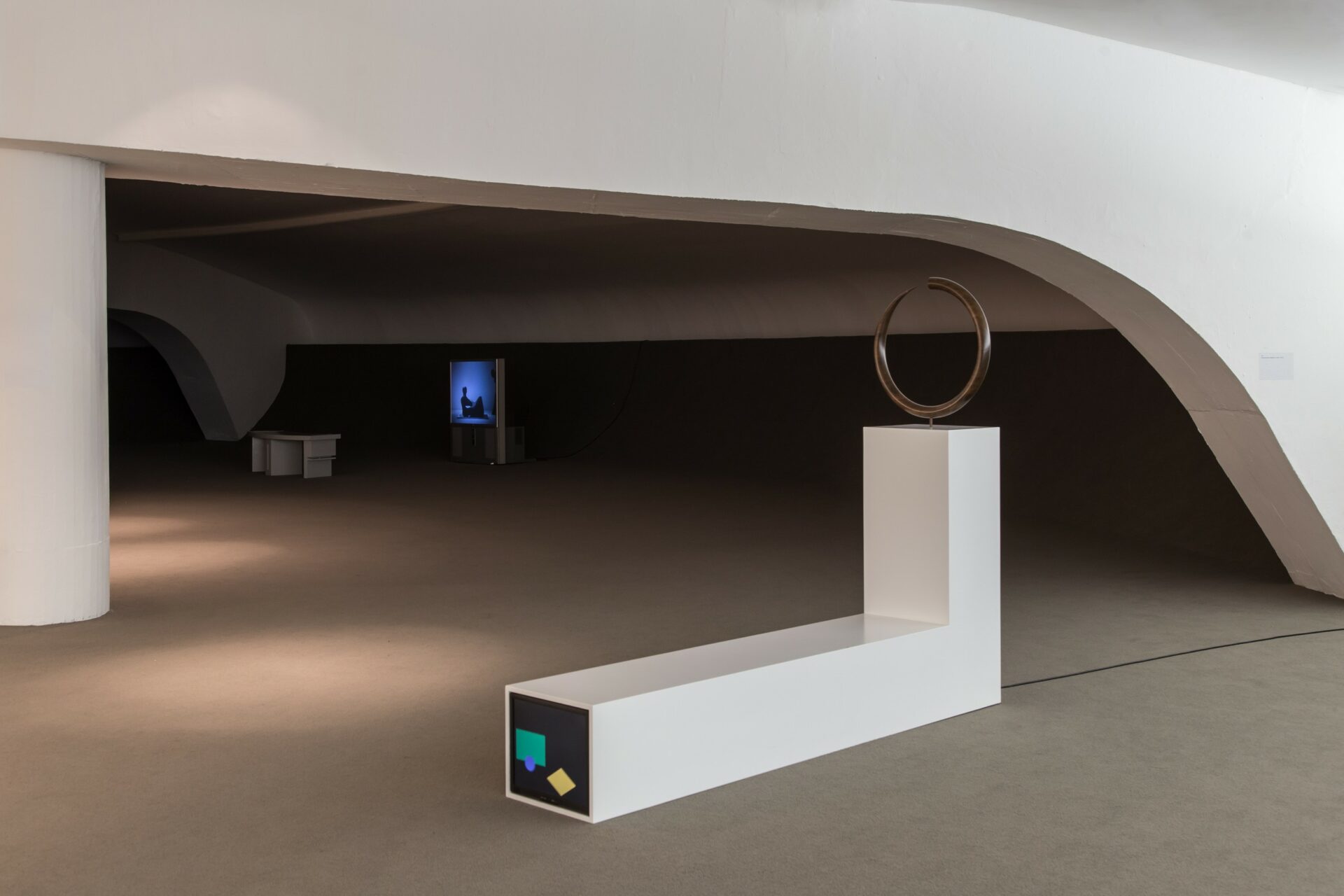
AM: I like this possibility that video art brings to rely on the autonomy of those who experience the work. The perspective of someone who starts watching a 7-minute video at the 2-minute frame marks a starting point. Each experience begins at the point where it begins for those who arrive. Working as an art educator, the most boring and at times most interesting part is this daily contact with a work of art. I believe that this is where the artist’s work takes place and manages to fragment time in a space of desire, of learning. I believe your fictions operate in a similar way. When we are exposed to the bureaucratic way in which institutions such as museums, galleries and the like treat and segregate artists and workers or impose a cisgender and racist logic, we find ourselves confronted by this world we imagine and reality, so to speak. How can we, as artists, take advantage of these frictions?
LR: The museum is a medium. So how am I going to deal with this place? What bothered me most about film was this feeling I had that the body was somewhat annulled. My body is in a chair, in a dark room. So, I became interested in making audiovisual works, or other types of works, in which I took into account the paths taken by audiences that are constantly moving about. In the case of films, for example, I like to deal with different types and scales of projection, TV sets, monitors, different media. I always think about seduction when I exhibit my work.
In terms of the friction you mentioned between the artist and the medium, it is inevitable that there will be a confrontation. Museums are institutions and institutions have fears.
I remember that when we were in the process of exhibiting at MAC-Niterói, concerns came up about the reaction of the museum’s audience to some of the content. The year was 2018 and Niterói appeared to concentrate a large number of Bolsonaro supporters. It was very important for me to keep the original design that we had thought of, and after a few, actually several, conversations, that is what happened.
AM: About these experiments with projection formats and geometries, I would like you to talk about your individual exhibition at Pivô, which I saw last year. That was when we started the conversation that would become this interview, mainly by discussing the window that the word “republic” opens up. Not only in terms of Pivô’s location and Praça da República and its historical importance for São Paulo’s dissident gender movements but also in terms of this political abstraction that the Greeks invented. The geometry of the square is repeated on the circular projection screen, a cross between the transvestite and the gay, and the ambiguity of the word is translated into form in the exhibition. How do you see this relationship between form, matter and seduction strategy?
LR: I like it, and attempt it in my work, for the subject to become a language. I find it interesting that you mentioned geometries because there are “geometries of art”, so to speak. The rectangle, for example, when translated into film becomes the 16×9 projection screen. And then I get the idea that… if I’m dealing with different protagonisms, it makes a lot of sense to also deal with the hegemonic context of this geometry. República (2020) is a round film; I made another film, S (2017), which is square. It is not just about what is happening inside the screen; if my desire is to bring other narratives, I believe that this also involves language, format, geometry.
And in terms of Praça da República, there is this idea of it as an actual square. It hadn’t occurred to me, until our conversation, that República also refers to a geometry…
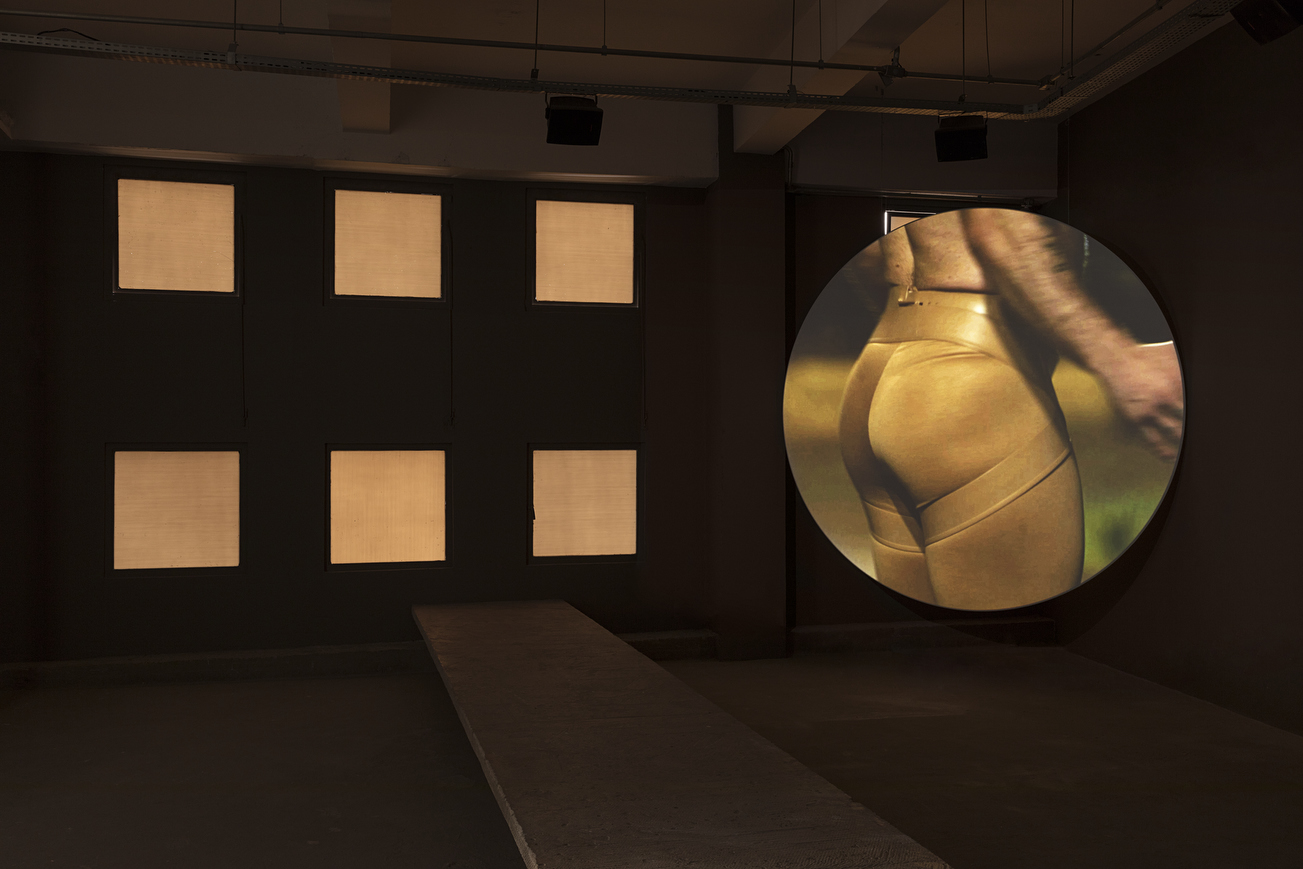
AM: I studied art history, so I know what I’m asking (laughs).
LR: I love art history!
AM: I think it is very important to pay attention to this issue of protagonism. Our image is no more important than our bodies or our lives, therefore this emancipation that puts us in the place of authors is essential, especially for subordinated bodies. As you mentioned, it is necessary to think beyond the subject; and how to think about this protagonism in a film such as República, which shows trans, transvestite and/or racialized bodies? Do you build relationships with your characters beyond an image bond? What are the working conditions of these people? Do these protagonists also play other roles in the production of the work, in addition to their own image?
LR: In communications school, I had a group of friends in my class, among them Gustavo Jahn and Melissa Dullius of the duo DISTRUKTUR, who was very much into film. One weekend, we watched nouvelle vague movies, the other, Brazilian cinema novo. I always found it very interesting, but I never understood where I stood. I think that I often lied, “I loved this movie”, but I couldn’t even access the inventive and experimental part of this so-called modern cinema. In the nouvelle vague there were men smoking cigarettes, wearing sunglasses and talking non-stop, and beautiful, silent women. Gay men? No way.
In Porto Alegre there was Mix Brasil, a festival of sexual diversity, but I remember thinking that the festival could be called GLS Brasil, because it was basically all made up of works portraying white European cisgender gay men. I thought the whole thing was weird. Despite the fact that I’m still this white cisgender gay man.
As I started to become interested in a “figurative cinema”, after my first years of production focused on a certain abstraction of the image, the characters I wanted to see were not the ones I found in feature films. My friendships started to appear in my work; when I made Ano Branco [White year] (2013), I was close to Glamour Garcia and Luezley Sol (Lou), who made me read a text by Paul Preciado, at the time Beatriz. I remember that Glamour was having a hard time with our public health system and all of that is in the film.
Britney Federlini, a makeup artist, said to me once when we were preparing for Ano Branco: “Do you know that if I break my foot and go to the hospital, the first thing they will ask for is an HIV test?” There is a scene in which Glamour’s character faces the robot that represents the State and we see the HIV ribbon symbol in the background. I like to think that somehow the work is built collectively. When people in the films see the end result, they have to love it. They have to be surprised, they have to be happy – that’s the best thing.
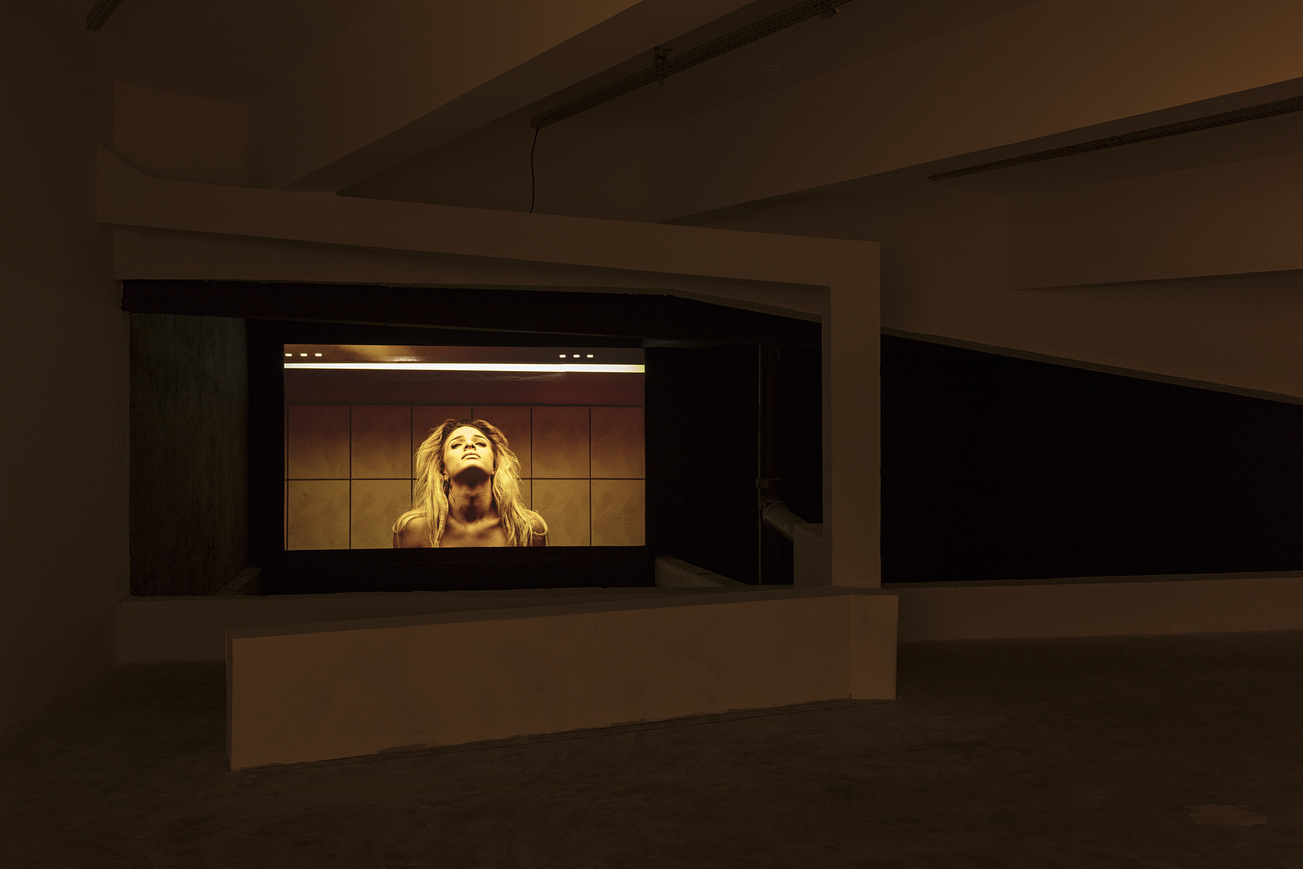
AM: You talked about representation, I always find it interesting for us who are artists and work with images to think about this huge gap between representation and representativeness. Something that happens in your work are these imagetic operations that are built with the image of the actresses, who in turn deal with the stigmatization built by the image itself. You put yourself in the place of the gay man, we talked about this LGBT union that is only possible in Brazil with all its contradictions due to the violence exerted against bodies of dissident genders. This is what is powerful in collaboration: the possibility of fighting together, even if it does not exempt the collaboration itself from being a relationship of violence. As your work circulates around the world, these places are replaced as they are re-territorialized. In places as elitist and violent as the surroundings of MAC-Niterói and Pivô, for example, our proximity arises from our need for survival. Here we are – two white people talking and, elsewhere, I am a transvestite and you are a gay man. How do these displacements contribute to your fictions?
LR: I remember being very happy when the MAC-Niterói exhibition opened. Glamour was premiering a TV Globo prime time soap opera and it was beautiful, for several reasons: the very name of the exhibition, TELEVISÃO, the proximity of Niterói to Rio, Globo’s headquarters, and witnessing an actress friend whose work I follow arriving at this place, “stardom”. I want to believe that it’s more about being together with people. My films sometimes deal with this idea of being famous, or rather, of fame in LGBT worlds, which are front and back of the scenes because there are only those worlds. There are no casting auditions for the situations I imagine when I’m thinking about a film. Danna Lisboa, Marcinha do Corinto, Natasha Princess, performance artists who star in some of my works, have fandoms consistently formed by gay men. They act, sing, compose, dance, also targeting the entertainment industry. This interests me a great deal.
AM: What is the difference between being an artist and being in the entertainment industry?
LR: We come back to the fact that, for me, the museum is my television. And I also want to make entertainment.
AM: Still talking about the protagonisms, one thing that amuses me and appears in both exhibitions that we talked about is how all the films are built around a central figure, human or non-human. In some films such as Zero (2019) or Modern (2014), the protagonists, respectively a dog and a sculpture, are difficult to generate identification with or mirror the audience, so to speak. Talk a little about that.
LR: I really like science fiction and fantasy films. There is an interview with actor Ian McKellen, the X-Men Magneto, where he says that if you exchange the mutant for an LGBT person, the issues remain very similar. I watched a speech by Jota Mombaça that she opened with a quote from the character Mystique: “Just because there is no war, it does not mean that there is peace”. This brings us closer to mutants and also brings us closer to animals, or things that are not necessarily human.
In Zero and other films in which there is an animal presence, such as in Ancestral (2016), which shows a giant anteater, my intention is to feel the human hand as little as possible, almost as if the film was recorded by the animal or came together by itself. I do not want to reinforce ideas of submission and domination of humans over animals. I don’t want that at all, I’m a Sagittarius, half-human, half-animal.

AM: The game of image seduction is very evident in your work. And knowing the art world to a point, I think that this threshold between being an object of desire and being an object of hatred or simply being conceived as an object is well implied. These are some dangerous games in which LGBT bodies are immersed and, as much as we want to rethink this context of submission, I believe that there is a reality that we cannot deny. For example, thinking about how such violence interferes not only with our lives but with our right to dream. I refer to the way in which this dispute occupies a central place in our narratives, survivals, dreams, possibilities of creation. I feel like we are playing a game with marked cards, and we know that the game was made for us to lose. And yet we insist on being artists in a system that controls us, standardizes us, domesticates us, and we rely on strategies that enable us to do what we do, entering even more normative spaces than ourselves, such as, for example, the museum or the university. We learn about the control structures that this mechanism creates and disseminates so that it becomes introjected into our own conception of normativity. Within the art system, your work and mine are thrown into the same boat, which is the “Queer of the tropics”, ready to be exported as an image of Brazil that, whether or not we identify with, we say we are part of. What does that say about you? About us? What are your role and that of your work in that war?
LR: I make images that I want to see. I am very interested in science fiction because I believe that it is very close to the way I see art: inventing a world. Because I am not very comfortable with the documentary of life. I throw these fictions to the world and I hope they will respond. I always want the world in which the films take place to “improve”, I think my work is optimistic in that sense. I want to be optimistic. The role of art in this war is very broad, but I believe it is mainly to re-imagine everything that has not yet been destroyed by man. There has been a feeling of defeat in the air since 2018 [the year Bolsonaro was elected president]. Yes, a lot has been lost, lives and dreams as you said, but we will win, there is no going back now. I really believe in that and I choose to believe in it. I am an optimist. What about you? Do you think you are being optimistic or pessimistic in your work?
AM: I think I am not the one being interviewed, but I believe that, as an artist, my desire is to operate for everything that we have not yet been able to name. To rely upon, not on the escapist attribute of fiction, but on its power to create, to invent. My work operates more on language than on image and this crossroads between the two has really caught my interest for its pedagogical potential. But again, I’m not the one being interviewed (laughs).
Agrippina R. Manhattan is an artist, teacher and transvestite. She was born and raised in São Gonçalo, and currently lives and works in Rio de Janeiro. Her work reflects deep concern about everything that restricts freedom. Words, norms, hierarchy, thought. She chose her name and invented herself. She thinks of sculpture as poetry, poetry as sculpture and everything as one thing, and part of it.

 Português
Português